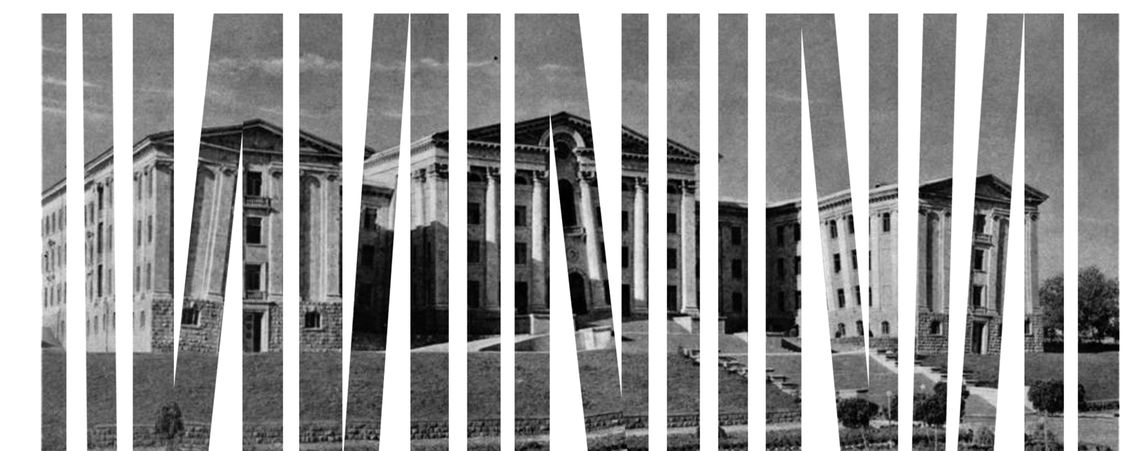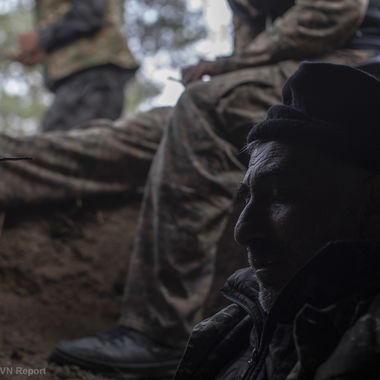Tue Nov 17 2020 · 11 min read
Early Elections Are Unlikely But Here Is What They Could Look Like

By Harout Manougian

Immediately prior to Nikol Pashinyan signing the November 10 trilateral agreement that will see several regions of Artsakh be handed over to Azerbaijan, including the strategic town of Shushi, 17 political parties put out a call for his resignation. Only three of those parties have contested a national election in previous years: the Republican Party of Armenia (RPA) led by Serzh Sargsyan, the Prosperous Armenia Party (PAP) led by Gagik Tsarukyan, and the Armenian Revolutionary Federation (ARF) led by Ishkhan Saghatelyan. Because those calling for the resignation and leading the protests following the signing of the agreement were associated with the previous government, even despite the major military defeat the Armenian people had just suffered, there was a general reaction in support of Pashinyan to prevent previous figures from returning to power. The violence that transpired that night, including the severe beating and hospitalization of Parliamentary Speaker Ararat Mirzoyan and the ransacking of government buildings, did not engender trust in the movement’s intentions. An assassination plot by these parties was alleged later that week, resulting in multiple arrests.
For a few days, it seemed Pashinyan was weathering the storm, even if badly bruised politically. That calculus was rewritten just after midnight on November 16 with an awfully-worded Facebook post. Pashinyan wrote:
“I watched dozens of videos from front line soldiers today. I am amazed at the boys’ insightfulness. Boys, you are right. I am waiting for you in Yerevan. To solve, once and for all, the issues of those whimpering in the shadows. I am proud of you.”
Appearing with his press secretary in a livestream the following morning, Pashinyan tried to walk back the comment. He said he did not mean for it to sound like he would order soldiers to face off against protesters in the capital. But the damage had already been done. Several MPs from his My Step Alliance Caucus in parliament had already tendered their resignations, along with two Deputy Ministers.
The biggest blow came later in the day, however. While speaking before Parliament, Pashinyan said that Azerbaijan had demanded control over Shushi as a precondition to any peace agreement. During his speech, the Foreign Affairs Minister’s spokesperson Anna Naghdalyan contradicted that assertion in a Facebook post, saying that the handing over of Shushi had never been discussed “during peacetime,” i.e. before the start of the war on September 27. Half an hour later, Naghdalyan posted Foreign Affairs Minister Zohrab Mnatsakanyan’s resignation letter.
During that same appearance before Parliament, in discussing the neglect of previous governments in redeveloping Shushi, Pashinyan used the words “Shushi was an unfortunate, colorless city. Did we need Shushi? If we needed it, why was it left in that condition?” The clip exploded on social media, requiring the Prime Minister to, again, for the second time that day, explain that he meant something different, that he was lamenting that, despite the investment that had gone into Shushi from both private and public sources, the city deserved even better.
That night, the President of Armenia, Armen Sarkissian, released a video statement in which he called for the resignation or removal of the Prime Minister, in accordance with constitutional processes, and the calling of early parliamentary elections. In the meantime, he called for executive power to be transferred to a “high quality National Consensus Government.” It must be clarified that the President of Armenia, under the current 2015 Constitution, cannot exert his unilateral will with respect to these matters. For his proposed approach to move forward, either 1) Prime Minister Nikol Pashinyan must voluntarily tender his resignation to the President, or 2) the National Assembly must pass a motion of no-confidence in the government. Notably, in order for the second option to be taken, the current state of martial law must first be lifted. Ahead of early elections, the Electoral Code would also need to be amended to factor in safety precautions associated with the still-ongoing coronavirus pandemic.
What Is a “National Consensus Government”?
The concept of a “National Consensus Government” was not elaborated by President Sarkissian, leaving the interpretation up to analysts. Such a term is not foreseen in Armenian legislation. He could be referring to an arrangement similar to the one agreed to in North Macedonia at the beginning of 2020, where members of both major parties ruled together and required both sides to sign off on any major decision.
To be frank, such an arrangement is not likely to be forged in Armenia. Despite resignations, the My Step Alliance still holds a solid majority in the 132-seat parliament and the ideological distance between them and the second-place Prosperous Armenia Party (and its 16 co-signers demanding Pashinyan’s resignation) is an unbridgeable chasm. In fact, they are currently trying to revoke Tsarukyan’s seat.
When the 17 political parties made their November 9 announcement demanding Pashinyan’s resignation, they had called for the creation of a “Homeland Salvation Committee,” implying that it would take on the executive power of the government. There was no indication that they intended to include any members of the current ruling party in the body.
Making predictions about politics has a tendency to haunt pundits when they turn out to be completely inaccurate. Nevertheless, a wide spectrum of possible scenarios is presented below.
Pashinyan’s Possible Futures
The resignations of November 16 might finally convince Pashinyan that his continued presence at the helm of government may be doing more harm than good to his reform agenda for the country. Watching some citizens that supported him in 2018 turn to the Republican/Tsarukyan/ARF camp, he may decide that passing on the torch may be his best bet in keeping the “old regime” from returning to power. He could propose a successor (publicly or privately) to the National Assembly but it is ultimately the National Assembly (more specifically, if they can remain united, the My Step Caucus) that will get to decide on who would take his place.
Alternatively, his own parliamentary caucus could make such a decision for him by presenting a motion of no confidence. Both parliamentary opposition parties, Prosperous Armenia and Bright Armenia, have tried to make this happen but repeated resistance by My Step MPs to taking that route suggests that such a public defrocking is not likely to take place. If a critical mass does end up turning on him, one would hope that they would extend him the courtesy of letting him know that it is coming and allow him to resign on his own terms.
In a third scenario, Pashinyan is able to complete his term. He would likely be harassed by protesters for the next three years of his five-year term at every public appearance. Every off-keel comment he makes will be meme-ified, potentially presented out of context, and weaponized against him and his team. Ministers and MPs unwilling to hold rank will be purged or resign along the way, but it will become increasingly difficult to find professionals willing to stake their reputation on a bruised political brand to fill the vacancies. As it is, both parliamentary opposition parties have said they will boycott parliament sessions unless a no-confidence vote is put on the agenda; though, neither party has said that they would back out of the trilateral agreement that ended the war.
The Process To Call Early Elections
In Westminster-style parliamentary democracies, the representative of the reigning monarch holds the absolute reserve power to dismiss parliament and call fresh elections at any time. Armenia’s constitution does not include such a provision, however. The President can express his judgment that early elections are warranted, morally guiding the process, but needs to get the National Assembly to concur.
In the event that Pashinyan leaves the post of Prime Minister, voluntarily or not, Article 149 of the Armenian Constitution is triggered. Cabinet ministers remain in their posts as the rest of the process plays out. The National Assembly will have seven days to nominate replacement candidates. They could choose a member of their own party but could also theoretically nominate any Armenian citizen that meets the following criteria:
-
Be at least 25 years old
-
Be solely a citizen of the Republic of Armenia for the preceding four years (no dual citizens)
-
Have permanently resided in the Republic of Armenia for the preceding four years
-
Have the right to vote
-
Have a command of the Armenian language
At the end of the seven day period, an open roll-call vote is held by the MPs. A candidate needs to get 67 votes in favor, no matter how many MPs are present at the session. At the time of publication, the My Step Caucus has 86 members, after Vardan Atabekyan and Taguhi Tovmasyan left the team to sit as independents.
If no candidate receives the necessary number of votes, the process is repeated seven days later. Only after failing to elect a Prime Minister on this second attempt is a new election called, which must take place on a day between 30 and 45 days later. It has been common practice (but not a requirement) for the election to fall on a Sunday within this range. Triggering the process in mid-November would result in an election shortly after the New Year.
If a new Prime Minister candidate is elected by the National Assembly, they could remain in office until the next scheduled election in 2023. In order to hold an election earlier than that, this whole process would have to be repeated (including that new Prime Minister’s resignation, as a formality), with a similar 45-60 day total timeframe.
Potential My Step Leadership Successors
It is extremely rare for an Armenian political party to pull off a leadership transition. Most are founded by one charismatic figure that maintains their primacy in the organization, even long after they stop contesting elections altogether. The Armenian National Congress is still led by Levon Ter-Petrosyan, the National Democratic Union is still led by Vazgen Manukyan, the People’s Party of Armenia is still led by Stepan Demirchyan, who took the helm after his father Karen Demirchyan (who founded the party) was assassinated. Even the Republican Party of Armenia has only selected a new leader after the incumbent’s death: Founder Ashot Navasardyan died in 1997, Vazgen Sargsyan died in 1999, Andranik Margaryan died in 2007, and Serzh Sargsyan is still the leader of the party, even after resigning as Prime Minister in 2018 due to mass protests.
The main unifier among My Step Alliance MPs has been loyalty to Nikol Pashinyan and his anti-corruption agenda; ideologically, the group covers a wide spectrum. In fact, the alliance consists of two separate parties: the Civil Contract Party that Nikol Pashinyan founded in 2015 and the Mission Party, which had run under the Tsarukyan Alliance in the 2017 election. A scenario where Pashinyan departs from the picture would most likely result in a few more defectors from the parliamentary caucus. That team may also decide to drop the “My Step” brand and return to the Civil Contract Party name in its public relations.
Besides Pashinyan, the two most prominent members of the team have been Deputy Prime Minister Tigran Avinyan, who was also the Warden of the Special Commission during the COVID-19 State of Emergency, and Ararat Mirzoyan, who is currently the Speaker of Parliament but was also Deputy Prime Minister from May to December 2018. The two most prominent women in its leadership are Lena Nazaryan, who is a Deputy Speaker of Parliament, and Lilit Makunts, the Parliamentary Majority Leader.
Any process to designate a new Prime Minister candidate would be handled internally by the Civil Contract Party under a process that is not clear at this point and would not be subject to external oversight. Many current My Step MPs are not actually card-carrying members of the Civil Contract (or Mission) Party. It would be up to the Civil Contract Executive Board to decide to what extent the process to choose a new leader may include them, since their votes would still be critical to the candidate’s acceptance by parliament. The current Chair of the Executive Board is Suren Papikyan, who is also the Minister of Territorial Administration and Infrastructure. If any such leadership transition does not go smoothly, it may not be possible to dig the team out of the mire.
A Hidden Two-Party System
There is a ticking time-bomb hidden in Armenia’s 2015 constitution, which was developed by a nine-person team appointed by Serzh Sargsyan. It did not get triggered by the 2017 or 2018 parliamentary elections because, in both cases, one party on the ballot was able to get a majority of the seats. However, in European parliamentary systems, such an outcome tends to be rare. Usually, a wider number of parties enter parliament, some of which will need to agree to form a governing coalition that together controls over half the number of seats. There is a set timeframe of 28 days after the election to put together this coalition. If there is no such clear majority, Article 89 of the Constitution provides for a second-round election to take place, where only the top two parties can run (other parties can form new alliances with them for the second-round but not run on their own). If there is a splintering of parties and no majority combination can be assembled, the parliament resulting from a second round could effectively shut out all other voices.
This “stable majority” provision had been singled out to be eliminated by the ongoing Expert Commission on Constitutional Reform (which now may never get to bring its proposals to a referendum).
If the President’s advice is followed and an early election is called under the current circumstances, it is highly likely that a post-Pashinyan Civil Contract Party and a Republican/Tsarukyan/ARF coalition will be the two largest blocs but both short of a majority. Depending on how the seat distribution ends up and what other parties enter the race, Edmon Marukyan’s Bright Armenia Party could end up playing kingmaker, with the ability to form a governing coalition with either of the two sides. However, the differences between Marukyan’s team and either of the other two camps could prove to be irreconcilable, in which case, they may be shut out of parliament entirely for the subsequent five years, if a second-round election proceeds.
At this point, all of this is conjecture. The political situation is very dynamic and any predictions on how things could unfold need to be taken with a grain of salt.
A Shift Toward Russia Expected
One thing that is not conjecture is that the 2020 Artsakh War will leave a permanent mark on Armenian politics. Pashinyan never questioned Armenia’s continued membership in the Russian-led Collective Security Treaty Organization (CSTO) and Eurasian Economic Union (EAEU) but his anti-corruption agenda signaled a turn toward European norms, at least in comparison to Serzh Sargsyan’s administration. Through its actions and omissions, Russia has taught Armenians a hard lesson about how their national security relies on its goodwill. Some Armenian voters may decide that a return to old habits may be a price worth paying if it deters Turkey and Azerbaijan from continuing their drone technology warfare. It has become clear that those two countries have the capability to march into Yerevan while the rest of the world sits on the sidelines. Russia has shown that it is the only power willing to intervene on Armenia’s behalf and that it will come at a price. The coming weeks, months and elections are part of the negotiation on what that price will be.
also read
Belarus Was Sanctioned, Why Not Azerbaijan?
By Harout Manougian
Western countries imposed sanctions on Belarus’ Aleksandr Lukashenko for cracking down on democracy and attacking civilians. Ilham Aliyev has actually been more brutal but has not been penalized.
Despair, Anger or Resolve
By Raffi Kassarjian
Resolve is different from blind faith that “this too shall pass.” We need the entire Armenian nation to start getting ready for the next encounter, writes Raffi Kassarjian.
The Responsibility to Protect
By Eric Grigorian
The ongoing war in Artsakh has profoundly impacted the Armenian world. Photojournalist Eric Grigorian's photo essay reflects on those who have had to bear the heavy human toll in protecting and safeguarding the homeland. Images are from Artsakh, Goris and Yerevan, taken between October 24 and November 5, 2020.





